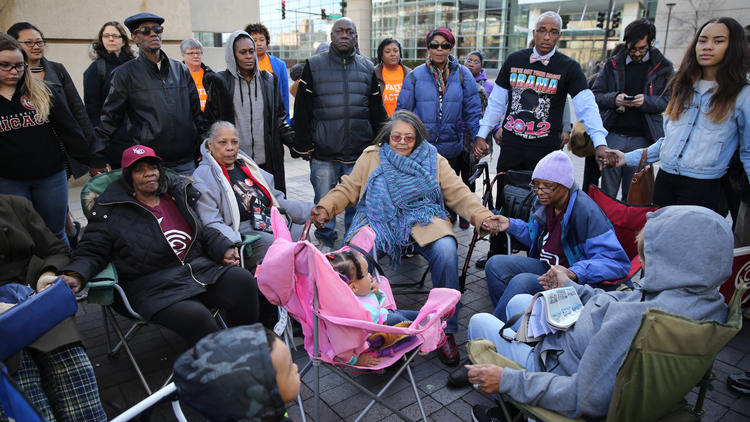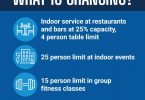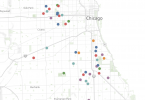d like to talk frankly to African-Americans. In Chicago. On the South Side.
Sometimes, my people, we can be our own worst enemy.
Tuesday night, a former president of the United States stood in front of a mostly African-American crowd at McCormick Place and practically begged them not to turn their backs on a more than $500 million private investment in their community.
When has that ever happened in America?
It is undeniably absurd that Barack Obama would have to keep coming to Chicago to try to convince people who have barely seen a dime spent on their communities for decades that this kind of attention is a good thing.
While most African-Americans who live in the area fully support the Obama Presidential Center, there are some who still need convincing.
Sometimes we can become so accustomed to not having anything that we forget that we deserve everything. We fear that change could rob of us the few crumbs we have been able to scrape together for ourselves.
If we are not careful, this immobilizing fear will be our downfall.
Were the developer anyone other than Obama — whose deep roots on the South Side made the area the only real choice for his presidential center — it is likely he would have packed up his drawing board and gone elsewhere.
Fortunately, Obama gets why some people are apprehensive.
We cannot dismiss concerns of low-income residents and the elderly that they might someday be forced out of their homes by rising rents they can no longer afford. We have seen it happen in Chicago before — in Pilsen, Wicker Park and Humboldt Park.
As neighborhoods change, no one can guarantee that anything will remain the same. Obama would be lying if he said he could.
But what he said Tuesday night helped put the idea of gentrification into perspective.
“It is not my experience,” he said, “… that the big problem on the South Side has been too much development, too much economic activity, too many people being displaced because all these folks from Lincoln Park are filling in to the South Side. That’s not what’s happening.
“We have such a long way to go before you will start seeing the prospect of gentrification,” he said. “(My daughter) Malia’s kids might have to worry about that. Right now, we’ve got to worry about broken curbs and trash and boarded-up buildings. That’s what we really need to work on.”
One of the problems of living in a city as segregated as Chicago is that we don’t always get to see the vast treasures located in other communities. It only takes a short drive north to see what real community investment looks like.
Over the past several years, Chicago has poured billions into creating a housing, business and retail mecca downtown and farther north. Investors currently have more than $20 billion in the pipeline.
There is Wolf Point, for example — an old parking lot on the Chicago River, where three glass skyscrapers totaling more than $1 billion will soon tower over downtown.
Cranes are everywhere in the West Loop. At least three 500-foot skyscrapers are in the works. New housing, trendy restaurants and boutique hotels already are in place. McDonald’s is moving its global headquarters there from the suburbs.
In Lincoln Park, construction has begun on Lincoln Common, a $350 million project on the site of the former Children’s Memorial Hospital. The city recently approved plans to reshape the old manufacturing district along the North Branch of the Chicago River, paving the way for billions in private investment and tens of thousands of jobs.
While people in these affluent neighborhoods are worried about too much development, we’re complaining on the South Side about the only major project to come our way in years.
Some of us are getting too caught up in the agendas of preservationist groups like Friends of the Park, Save the Midway and Jackson Park Watch that do nothing to help us solve the real problems facing our communities.
We cannot allow these groups to co-opt our once-in-a-lifetime opportunity to offer a better life for our children and turn it into a fight over saving trees and birds.
We cannot turn our backs on a chance for our young people to choose scholarships over gangs, in favor of preserving a patch of grass in neighborhoods that are filled with so many garbage-strewn vacant lots.
We cannot turn away the potential for good jobs, better housing and business partnerships that will come with this new investment — certainly not because we might have to take a less convenient route when driving near Jackson Park.
And we cannot allow anyone who dislikes the city’s plan to spend $175 million on roadwork and overpasses for the Obama Presidential Center to take that money away from us.
Other neighborhoods have gotten much more from the city in regular installments. We should consider this a lump sum payment on the city’s long overdue bill to the South Side.
It is time to join forces and get to the business of knocking down any barriers that threaten to get in the way of the Obama center rising from the dirt.
Only then can we hold the former president accountable for fulfilling his promises.
dglanton@chicagotribune.com
Twitter @dahleeng







